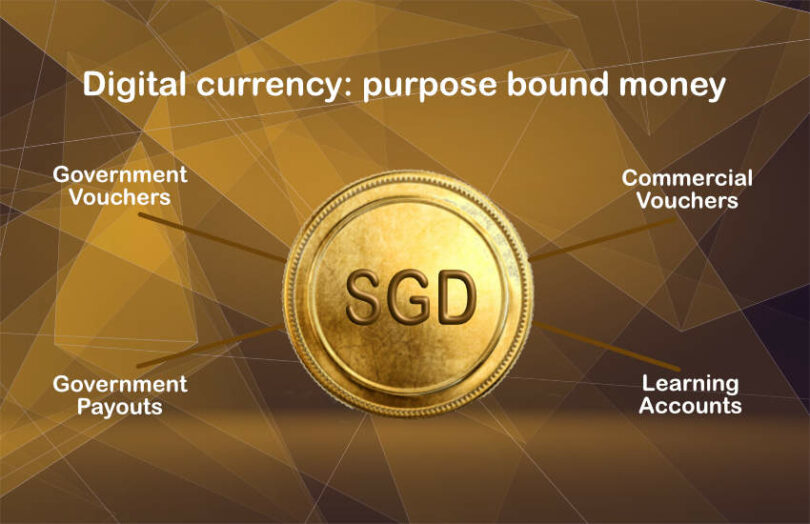Today the Monetary Authority of Singapore (MAS) published a whitepaper proposing standards for digital money. The focus is on programmability, whether the underlying digital money is a central bank digital currency (CBDC), a tokenized bank deposit or a stablecoin. In all cases it envisions the use of distributed ledger.
MAS wrote the whitepaper in collaboration with the International Monetary Fund (IMF), Banca d’Italia, Bank of Korea, banks such DBS and JP Morgan, and FinTech firms.
It extends MAS’s previous work on Purpose Bound Money (PBM), where the simplest analogy is a voucher. Since MAS floated the PBM idea, multiple central banks have insisted that their future retail CBDCs will not be “programmable”.
In January, the European Central Bank (ECB) Director Fabio Panetta said, “the digital euro would never be programmable money. The ECB would not set any limitations on where, when or to whom people can pay with a digital euro. That would be tantamount to a voucher. And central banks issue money, not vouchers.”
The MAS whitepaper addresses this concern, comparing the above sort of programmability to programmable money, which central banks prefer to avoid. Most central banks, including the ECB support private sector programmable payments, such as being able to specify a payment based on a condition.
MAS agrees that programmability should not limit the distribution of money or lead to fragmentation of liquidity.
Its suggestion of Purpose Bound Money (PBM) is a third path combining some features of programmable payments and programmable money.
How Purpose Bound Money works
PBM functions like a wrapper. Sticking with the voucher analogy, a digital currency could be wrapped as collateral and have conditions attached. It might be redeemed to buy certain brands of goods, and can only be used at a defined list of stores. Once the retailer receives the PBM it is unwrapped and reverts to being digital currency usable for any purpose.
The whitepaper outlines a list of potential other use cases. For example, an upfront payment might be made for business services, but the corporation can only access the money when they fulfil the service delivery.
The sale of a property is another example of where payment can be released when conditions are met. It could avoid the sometimes risky process of depositing lifesavings with a lawyer.
And MAS envisions applications for governments to disburse aid that could use commercial bank deposit tokens.
A number of pilot use cases are in progress as part of Project Orchid, including for ecommerce escrow payments with Amazon, FAZZ and Grab. The money is only released when a customer receives their delivery. Another pilot is for cashback rewards with DBS, Grab, FAZZ, NETS and UOB.
Meanwhile, this week has seen two publications relating to the future of interoperability of CBDCs and bank deposit tokens. The IMF shared a paper on its XC platform for cross border payments and the BIS released a report on the Unified Ledger.






